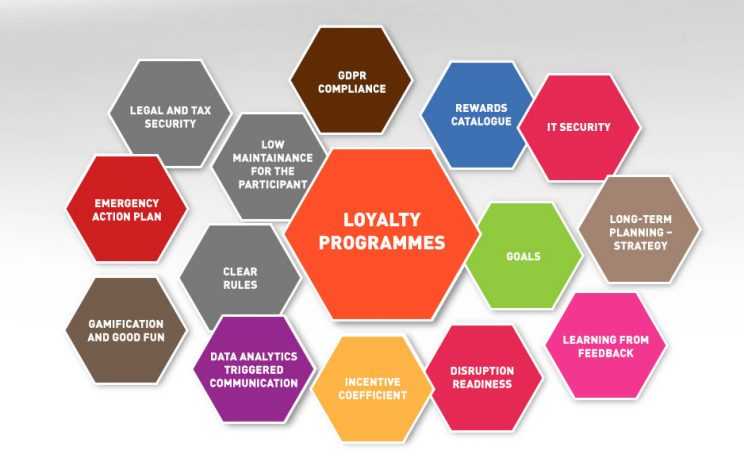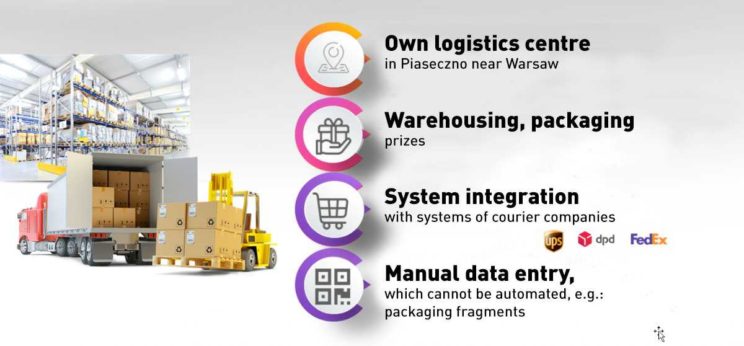B2B incentive programmes in the construction industry. Universal conclusions
The text below addresses the following topics:
- What can we learn from organising incentive programmes in the construction materials industry?
- Why are activities carried out by organisers of incentive programmes in the chemical, construction materials and paint categories, etc. worthy of imitation?
- What are the target groups of B2B incentive programmes in this market segment?
- What goals are set for participants of such programmes?
If there is any market category that is a unique testing ground for B2B incentive programmes, then it is certainly the broadly understood construction materials industry. Atlas, Baumit, Ceresit, Dekoral, Flugger, Isover, Kaparol, Knabe, Knauf, Mapei, Rigips and Śnieżka are only a few of the brands whose producers have been successfully carrying out incentive programmes targeted at subcontractors (construction teams), retail outlets, advisers in direct contact with clients, as well as architects for years.
What are the results of these activities? First and foremost, this market category is highly competitive. There is a range of products that meet the same needs, at a similar price, distributed through the same distribution channels. Secondly, there are at least a few “decision centres” constituting groups of influence whose intentions impact the final choice of a specific product brand.
In contrast to many FMCG categories, where the end consumer individually decides on brand selection, within the construction industry the decision is the result of a recommendation from an architect, investor, sales adviser or construction team. Aside from specific situations when we make an impulse visit to a DIY centre to buy a can of paint, a brush or a roller to paint a room over the weekend, in most cases the decision process is considerably more complicated.
Arguments in favour of B2B incentive programmes also include a lack of branding visibility on the components that make up the final effect. The owner of a Mercedes or BMW will dazzle with the status that comes from driving a premium car brand for as long as the car is in their possession. It is different in the construction materials industry. Let’s take a look around. Whether we are in an office or working from a home office, no one, aside from a small group of experts, is able to determine the paint brand that was used to paint the walls of the room we are currently in. Not to mention the brand of the insulation, plaster and other components of a building’s construction. All of this makes the work of organisers of B2B incentive programmes in the construction materials industry worthy of benchmarking.
The factors of an effective B2B incentive programme
At i360, we have identified 14 factors of an effective B2B incentive programme. The most important of these are clearly defined goals and principles, data and information security, the appeal of rewards on offer, minimisation of the burden on participants in connection with meeting programme requirements and long-term planning – strategy and many others. The full list is presented on the chart below.

Differentiation of target groups
Because the purchasing process in the building materials industry involves many independent groups of influence whose arguments and promotional activities affect the final brand selection process, the programmes are directed to:
- Architects
- Construction teams
- Decision-makers at retail outlets
- Client advisers
- Sales representatives (own and of distributors)
Target groups do not overlap. As an example, an architect typically does not own a retail outlet and not every client adviser is an architect. However, representatives of both groups influence the decision to select a specific product brand used in the course of renovation or construction. For this reason, producers set specific goals for them and, in a manner tailored to the preferences of the target group, encourage them to promote the sale of the brand products covered by the incentive programme.
How do they do it? At the point of sale, it involves a requirement to maintain a specific product range, properly display products and advertising materials and participate in training. In the case of subcontractors – teams – documented product purchases in the appropriate annual volume and specific product mix. With respect to architects and client advisers, a recommendation matters most and the key challenge is the possibility of its precise measurement.
Key benchmarking conclusions
- The role of indirect sales. Due to the structure of distribution channels in Poland, most of the volume of building materials is sold at independent retail outlets or wholesalers. As a result, incentive programmes are based mostly on the transmission of copies of proof of purchase. In this way, participants document their satisfaction of the requirement related to sale or acquisition of the product. On one hand, it is a sign that this distribution channel still has a long road of growth ahead. On the other, it shows that programme operators must demonstrate great operational efficiency in processing a massive number of proofs of purchase documents. Typically, automated processes using machine learning elements are used in this area to fully automate the process of calculating points based on hundreds of thousands of scans of accounting documents.
- Settlement based on purchase documentation. In addition to the above-mentioned calculation of sales based on invoices, there are still programmes that involve cutting out fragments of packaging. Most have been replaced by printing on the packaging of individual or QR codes, which are then sent via SMS, scanned in a mobile application or entered on a website. In this regard, a good IT system is necessary to operate the programme, with extensive functionalities of the loyalty engine. It is important that it be covered by the international information security standard ISO 27001:2013.
- Separate trade terms and the incentive programme. This dualism of incentive sources creates a challenge in terms of combining communication with the status resulting from both commercial conditions and the B2B programme, while skilfully dividing the payment of benefits from each of these sources. Moreover, it is also necessary to diversify the scope of information provided to owners, decision-makers and employees of sales outlets in order to maintain the appropriate level of motivation of each of these groups and, at the same time, data confidentiality. In this respect, a key role is played by dashboards presenting the programme status and results.
- The important role of education and training. In light of technical aspects, it is impossible to overestimate the role of training, carried out as part of incentive programmes in the form of communication via blogs, e-learning, webinars, and YT as well as onsite. In this area, it is important to be able to integrate the IT system to operate the programme with e-learning tools (if external IT solutions are used) or to have an e-learning module in the programme management software, which will reward points for test implementation, while additionally differentiating the assessment depending on the obtained test result.
- Segmentation of participants. Due to the multiplicity of target groups, the diversified scale of renovation and construction projects, and taking into account that the participants specialise in specific types of work, segments of participants are created. At the most basic level are so-called VIP segments, admission to which requires the collection of a certain number of points for purchases, the main benefit of which is:
-
- Priority in point calculation based on proof of purchase;
- Participation in special events;
- Reporting sales based on:
– Invoices issued to the investor,
– Statements;
Particularly noteworthy is the approach according to which participant segments are named in a way that builds community: e.g. friend, professional, VIP. Simple and yet it evokes an emotional response that is hard to achieve with the standard bronze, silver, gold approach…Thanks to higher status levels participants obtain, among others, point multipliers that enable them to collect points more rapidly. Access to hidden tabs in the rewards catalogue, reserved for higher participant segments, is also frequently offered. Finally, segmentation of participants is carried out on the basis of their specialisation, which is reflected in purchase histories, e.g. thermal insulator or tiler.
-
- Well-developed fraud management. The construction industry is particularly susceptible to activity conducted in the so-called grey economy. As a consequence, operators of incentive programmes in this market segment are faced with the challenge of securing IT processes and systems against any attempts at abuse or even fraud. Often, while conducting incentive programmes in this market segment, we identified submissions that the IT system or the internal audit department flagged as suspicious. Attempts to submit the same invoices multiple times, to send false or specially fabricated receipts, to submit accounting documents which are then corrected, as well as other practices, are not uncommon. Preventing the acceptance of such sales or purchase documentation requires the implementation of control processes and algorithms, and above all, vigilance.
Own logistics centre — a key success factor
The implementation of incentive programmes on a massive scale requires one’s own logistics centre. The role of such a centre grows along with the number of supported programmes and participants who take part in each of them. The possibility of efficient warehousing, packaging and shipping of prizes, and automation of courier ordering and parcel service management, as well as of manual data entry of documents on the basis of which points are calculated, requires its own logistics resources.

At i360, we serve a wide range of B2B incentive programmes. We also consistently monitor all significant incentive programmes implemented on the Polish market. Within the construction materials segment and beyond. We share our experiences with our clients.
If you are interested in implementing an incentive programme or want to find out how i360 can help you optimise the programme you have from a procedural, tax or legal, or logistic perspective or finally, in terms of efficiency, please contact us.

Contact us to learn more.
We know everything about loyalty programs.
![]() Tomasz.Makaruk@i360.com.pl
Tomasz.Makaruk@i360.com.pl
![]() 22 331.09.97
22 331.09.97

